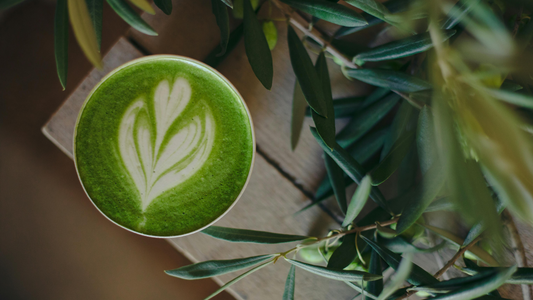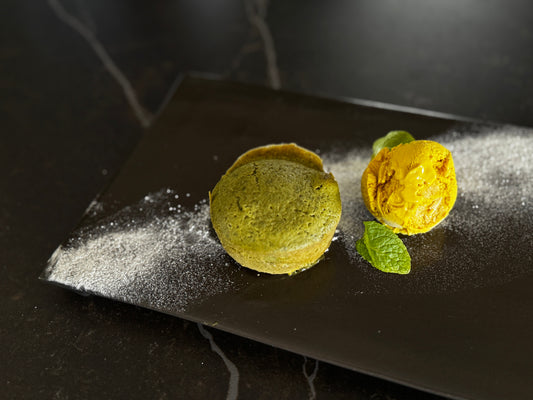How is our ceremonial matcha produced?

From leaf to green gold powder 🍵
Matcha tea is more than just a drink. Behind each cup lies a meticulous, artisanal process rooted in centuries of Japanese tradition.
If this Japanese tea is so prestigious, it is because it is undoubtedly the tea that requires the most attention, work, rigor and delicacy. Let's discover its manufacturing process together!
1. The Art of Shading: The Magic Begins Here
It all starts on the tea plantations, where tea plants are carefully covered with tarps about 3 to 4 weeks before harvest. This process, called shading or tanna , is crucial. Why? By limiting direct exposure to sunlight, the plant produces more chlorophyll, giving the leaves that deep emerald green color. Additionally, shading helps reduce bitterness by increasing the concentration of L-theanine , an amino acid that brings sweetness and umami to matcha.
2. The Harvest
When the time comes, the leaves are hand-harvested to preserve their integrity. Only the youngest and most tender leaves, located at the top of the tea plants, are chosen. This special care guarantees a superior quality matcha. Each gesture is precise, each leaf is cherished, because it is in these leaves that lies the promise of an exceptional matcha.
3. Steaming
Immediately after harvest, the tea leaves are steamed for about 15 to 20 seconds. This process, called muse , stops oxidation and fixes the leaves' bright green color. Unlike classic green tea, which is often roasted, matcha preserves all the beneficial properties of the leaves . The result? An explosion of freshness in every cup.
4. Drying: Preparing the leaves for processing
After steaming, the leaves are carefully dried. This step removes excess moisture while preserving the delicate aromas and nutrients. Once dried, the tea leaves are ready for a crucial step: tencha selection.
5. Tencha Selection: The very essence of matcha
Tencha is the name given to dried tea leaves that are destined to be made into matcha. At this stage, the veins and stems of the leaves are removed, leaving only the most tender and nutrient-rich part. This rigorous sorting process ensures that only the best of the tea is ground into powder.
6. Grinding: transforming tencha into green gold powder

Finally, here is the final and perhaps most fascinating step: grinding the tencha leaves. This work is traditionally done with granite millstones, which rotate slowly to grind the leaves into a fine powder. This artisanal technique, although long, is essential to obtain a superior quality matcha . A millstone takes about an hour to produce only 30 grams of matcha ! This slowness is a guarantee of finesse and texture, allowing each particle to release all its aromas during the preparation of the tea.
As you can see, this meticulous process is what makes each cup of matcha so special, and what makes it possible to offer an experience that is both rich in taste and history. When you enjoy your next matcha, you are tasting much more than just a drink: you are tasting the fruit of ancestral know-how, carefully preserved.
Now that you know the secret behind its production, your matcha will be even more delicious! Enjoy!











